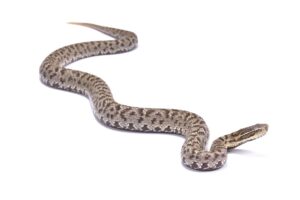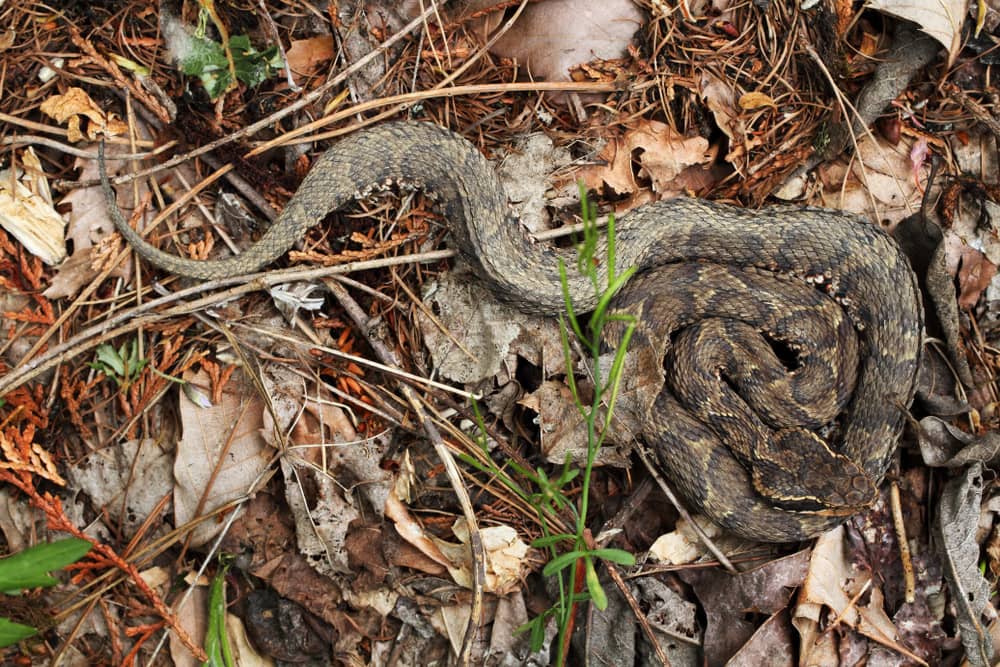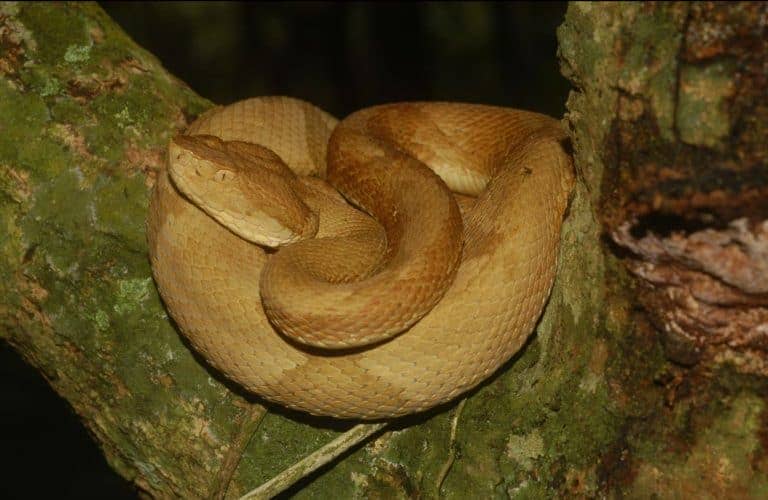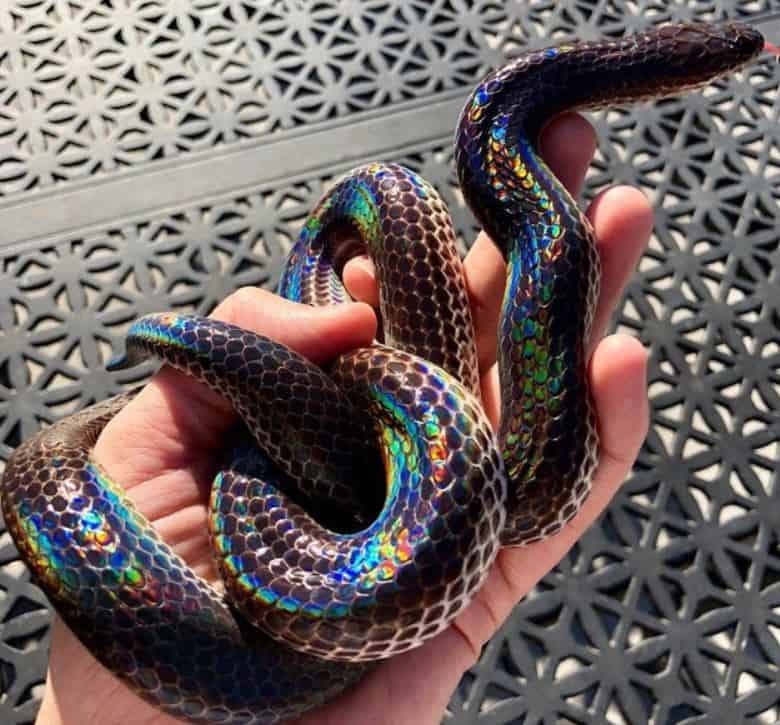Introduction to the Japanese Mamushi Pit Viper
The Japanese Mamushi (Gloydius blomhoffii) is one of Japan’s most venomous pit vipers, responsible for thousands of snakebite incidents annually. This snake is notorious for its potent hemotoxic venom, striking appearance, and aggressive nature when threatened.
In this complete snake profile, we’ll explore:
✔ Mamushi snake identification (appearance & behavior)
✔ Japanese Mamushi venom effects (symptoms & dangers)
✔ Habitat & geographical distribution in Japan
✔ Bite treatment & first aid (life-saving tips)
✔ Conservation status & ecological role
Let’s dive into the fascinating yet dangerous world of the Mamushi pit viper!

1. Japanese Mamushi Snake: Identification & Characteristics
Physical Appearance
The Mamushi pit viper has distinct features that make it easily recognizable:
-
Size: 50–80 cm (20–31 inches) in length
-
Coloration: Gray, brown, or reddish-brown with dark, irregular blotches
-
Head: Triangular with heat-sensing pits (a pit viper trait)
-
Eyes: Vertical pupils (indicating nocturnal hunting)
Behavior & Temperament
-
Nocturnal but active in cooler daytime hours
-
Ambush predator (waits for prey like rodents & frogs)
-
Highly defensive – strikes quickly if disturbed
🔹 Did You Know? The Japanese Mamushi is responsible for 3,000+ bites per year in Japan, making it the country’s most dangerous snake.
2. Japanese Mamushi Venom: How Dangerous Is It?
Venom Composition & Effects
The Mamushi’s venom is a hemotoxin, meaning it destroys blood cells and tissues. Key effects include:
✔ Severe pain & swelling at the bite site
✔ Necrosis (tissue death) if untreated
✔ Internal bleeding & organ damage
✔ Possible kidney failure in severe cases
Fatality Rate & Antivenom
-
Death rate: ~10 fatalities per year (untreated cases)
-
Antivenom availability: Widely available in Japan
-
Survival chances: High with immediate medical care
⚠ Warning: Never attempt to suck out venom or apply a tourniquet—this worsens tissue damage!
3. Japanese Mamushi Habitat: Where Does It Live?
Geographical Distribution
The Mamushi pit viper is found across:
-
Mainland Japan (Honshu, Kyushu, Shikoku)
-
Some parts of China & Korea
-
Forests, grasslands, and farmlands
Preferred Environment
-
Damp, rocky areas near water sources
-
Rice fields & rural villages (human encounters common)
-
Hibernation: Underground in winter
🔹 Fun Fact: The Mamushi snake is highly adaptable, often found near human settlements, increasing bite risks.
4. Japanese Mamushi Bite: Symptoms & Emergency Treatment
Common Symptoms of a Mamushi Bite
-
Intense pain & swelling within minutes
-
Bruising & blistering around the bite
-
Nausea, dizziness, and sweating
-
Low blood pressure & shock
First Aid & Medical Treatment
✅ Do’s:
-
Keep the victim calm & immobile
-
Remove tight clothing/jewelry near the bite
-
Seek emergency medical help immediately
❌ Don’ts:
-
Do NOT cut the wound or suck out venom
-
Avoid ice or alcohol (worsens venom spread)
-
Never use traditional remedies without medical advice
🏥 Pro Tip: Japan has specialized anti-mamushi venom – hospitals in rural areas often stock it.
5. Mamushi Pit Viper vs. Other Venomous Snakes
| Feature | Japanese Mamushi | Habu Snake (Okinawa) | Yamakagashi (Tiger Keelback) |
|---|---|---|---|
| Venom Type | Hemotoxic | Hemotoxic | Neurotoxic |
| Aggressiveness | High | Moderate | Low |
| Bite Fatality | Moderate | Low | Rare |
| Antivenom | Available | Available | Limited |
🔎 Key Takeaway: The Mamushi is more aggressive and widespread than Japan’s other venomous snakes.
6. Conservation Status & Ecological Role
Is the Mamushi Snake Endangered?
-
IUCN Status: Least Concern (stable population)
-
Threats: Habitat loss & road accidents
-
Protected in some regions due to ecological importance
Role in the Ecosystem
-
Controls rodent populations (natural pest control)
-
Prey for larger predators (birds of prey, wild boars)
🌿 Conservation Note: While dangerous, the Mamushi pit viper plays a vital role in Japan’s ecosystem.
7. Frequently Asked Questions (FAQs)
Q1: How poisonous is the Japanese Mamushi?
The Mamushi’s venom is highly hemotoxic, causing severe pain, tissue damage, and even death if untreated. Immediate antivenom is crucial.
Q2: What should I do if bitten by a Mamushi?
Stay calm, immobilize the bitten limb, and seek emergency medical help immediately. Do NOT use folk remedies.
Q3: Where in Japan is the Mamushi most common?
It’s widespread in Honshu, Kyushu, and Shikoku, especially near forests, farms, and rural areas.
Q4: Can you survive a Mamushi bite without antivenom?
Survival is possible but risky—antivenom drastically improves recovery chances.
Q5: How can I avoid a Mamushi bite in Japan?
-
Wear sturdy boots when hiking
-
Avoid tall grass & rocky areas
-
Use a flashlight at night
Conclusion: Stay Safe Around the Mamushi Pit Viper!
The Japanese Mamushi pit viper is a fascinating yet deadly snake. Understanding its habitat, venom effects, and bite treatment can save lives. Always exercise caution in snake-prone areas and seek immediate medical attention if bitten.



